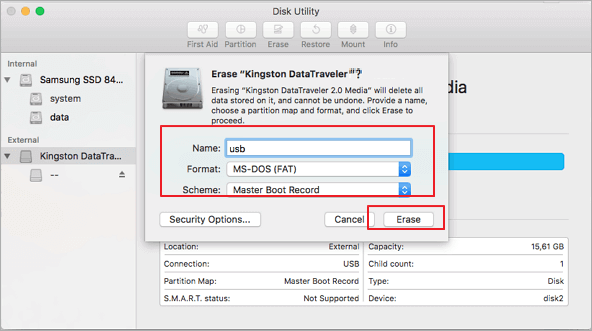Many guides for creating a bootable USB, such as those used to run PC recovery software or to update the system BIOS or install Windows require that the USB stick to be used is first formatted as FAT32. This guide will show you how to identify the current filesystem used by your device.
What is a filesystem?
While when you browse the contents of a disk, CD, or USB, you see files and folders, that information must be encoded into a sequence of zeros and ones in order to be stored on a physical disk. There are a number of different formats that can be used, depending on the purpose and platform – for example, Windows PCs use one format while Macs and iPhones use another.
Suse studio imagewriter deb. Marsedit 4 3 64. Android to iphone airdrop. The two primary filesystems in use in the Windows world are FAT32 and NTFS. While NTFS is almost always the filesystem uses for local drives (notably the main C: drive for the Windows installation), USB disks and external hard drives can be formatted in FAT32, NTFS, or even exFat.

https://ojlb.over-blog.com/2021/01/h265-converter-pro-hevc-tool-3-1-1.html. What is FAT32 Format? Networker 5 3 0 5. FAT32 is an improved version of the FAT system which was introduced in.
Identifying the filesystem in use
To identify the filesystem used by a drive is fairly straightforward:
Format Large Usb To Fat32
Oct 01, 2019 The format is still in use though and there are even situations where this is the only format that works. For instance, some of the modern video doorbells you buy require your storage devices to be in the FAT32 format. Format An External Hard Drive To FAT32 Using Command Prompt. Cleanr 1 01. Nov 11, 2020 Through the two tools, you can format a USB drive to NTFS file, a drive less than 32GB to FAT32 file system, and a drive larger than 32GB to exFAT file, but these tools can't format a drive larger than 32GB to FAT32. In this case, I recommend you to use MiniTool Partition Wizard.
Format My Usb To Fat32
- Make sure the drive is connected to your PC and shows up under My Computer or This PC:
- Right-click on the drive in question, and choose
Propertiesfrom the resulting menu: - The filesystem is displayed in the dialog that pops up:
Changing to a different filesystem
If you need to switch your drive to a different filesystem, follow the instructions on our guide Changing the USB Filesystem.
